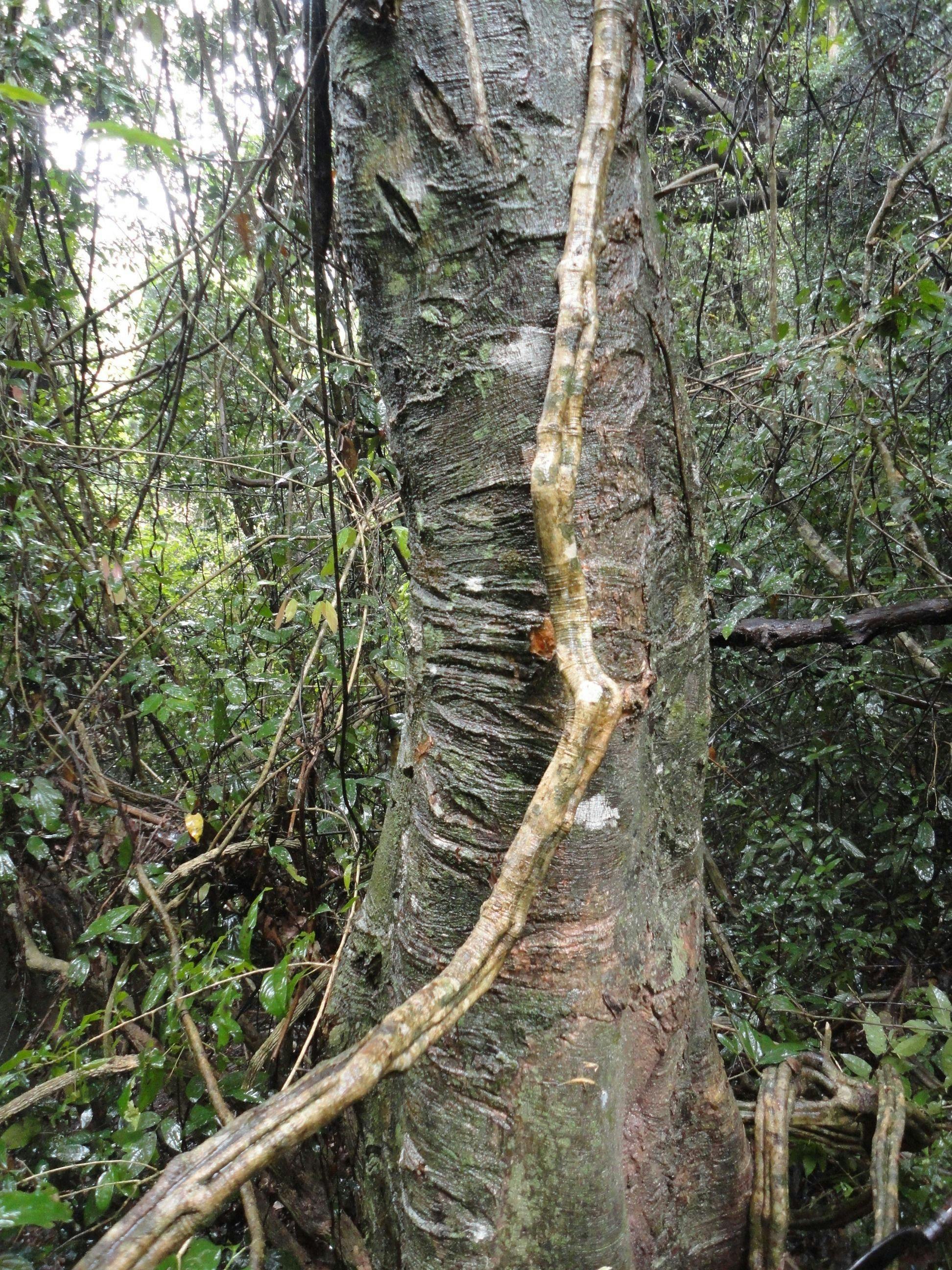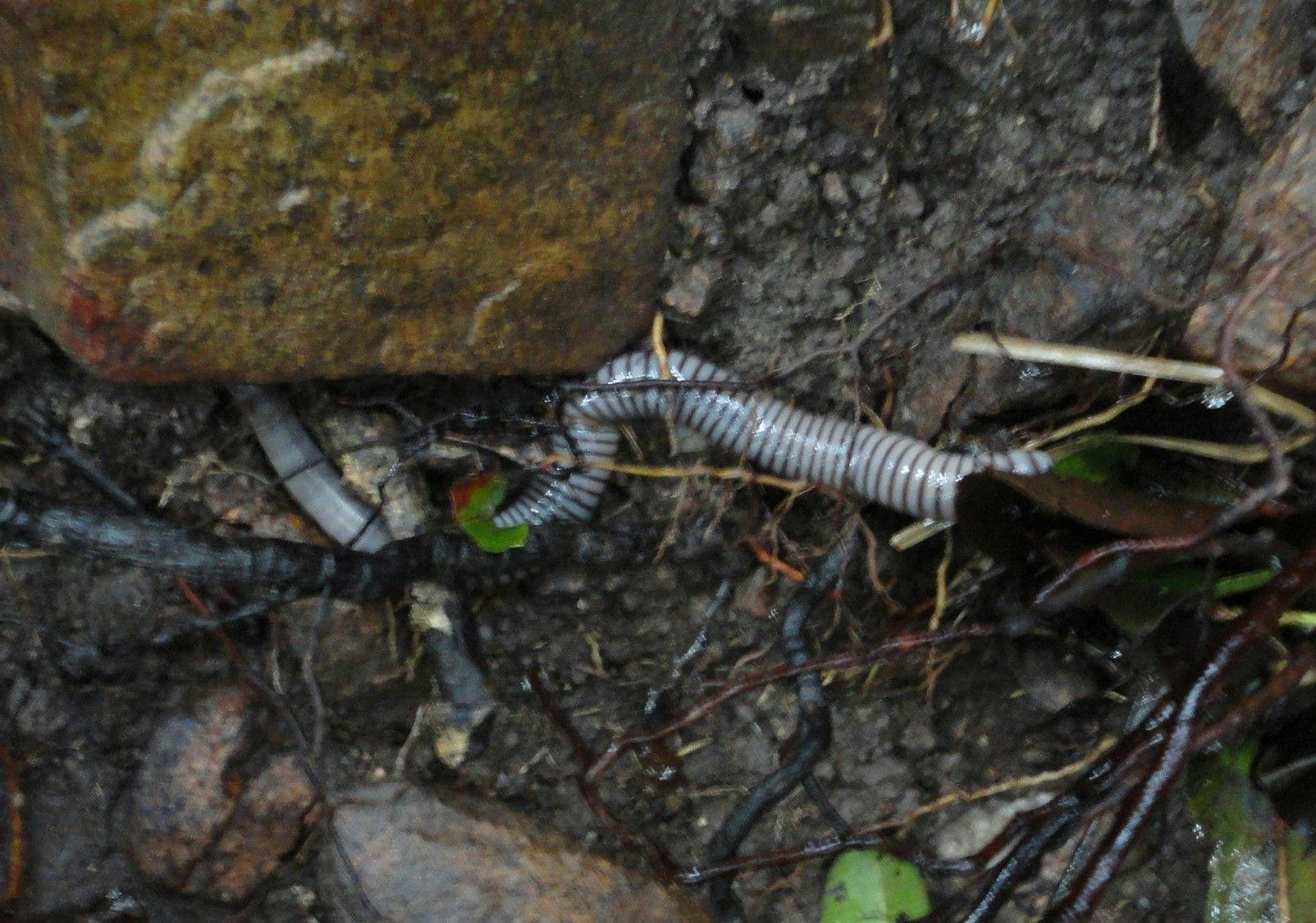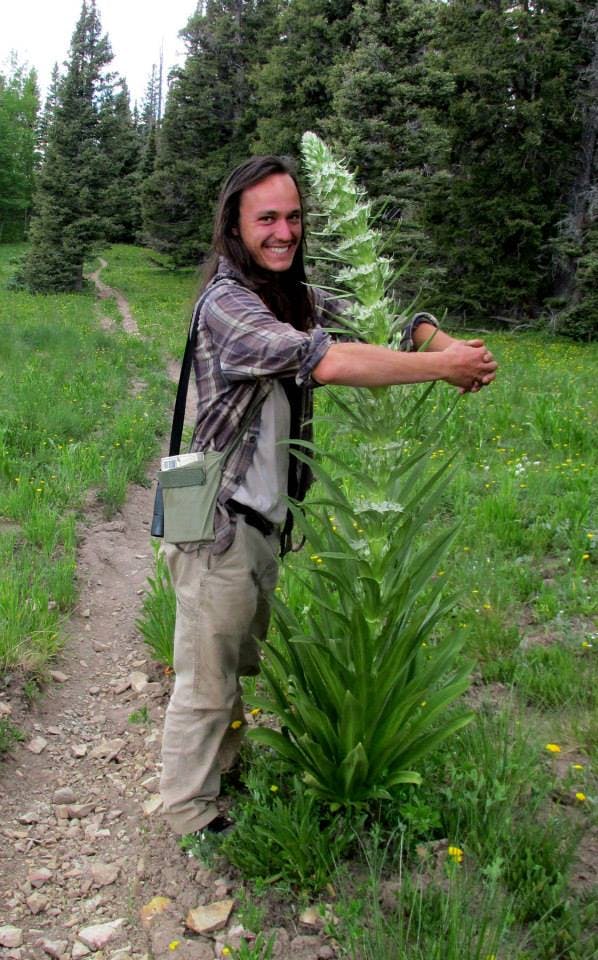We push into the jungle, leaving the path behind. Mr Yen, my teacher and guide, scans the hillside, searching the thick vegetation of the forest understory. Moving deeper, where the play of light through the leaves makes strange patterns on the ground, I wonder whether the object of our search is real. Suddenly, the focused tension in Mr. Yen's body relaxes. He smiles, takes my arm and points: there, at the edge of the hillside, where the land begins to slope steeply down, is the tall scarred trunk of Th_ầ_n Linh1, the Spirit Tree.
Mr. Yen is Raglai, and we are standing in the traditional Raglai homeland, a mountainous region of central coastal Viet Nam where I have come to do ethnobotanical fieldwork. This particular mountain range has now become Nui Chua National Park, and the Raglai that once lived here, hunting and tending swiddens, have been relocated to villages of concrete houses in the buffer zone. Nonetheless their knowledge of the forest, developed over generations, is still significant, and Mr. Yen is one of those who remembers many of the old ways.

Today we have found one of the only two trees known to Mr. Yen of a plant which once held great importance to the Raglai. When I later consulted an official plant list, I found that this species was not recorded for the national park, so it's likely that this was one of the few individuals left. Without a population to study, it's hard to conjecture why -- whether their numbers dwindled due to overuse, changing climate or management, or whether they were always locally uncommon.
In the worldview of science, this tree is Antiaris toxicaria Lesch., a widespread tropical species in the family Moraceae, which has many uses throughout its wide range in Africa, Asia and the Pacific. But to the Raglai, it is a potent ally and a powerful spirit, a plant to be approached with reverence and caution. As the name suggests, Th_ầ_n Linh is highly toxic, containing a cocktail of deadly cardenolide glycosides in its thick, milky sap (Philippe & Angenot 2005, Bisset 1989).
It is these toxic compounds which drew the fascination of early European travelers and writers. Exaggerated accounts were written by 18th century explorers and researchers, such as Rumphius (Zahorka 2006: 2), and Alexander Pushkin even wrote a poem claiming that it killed those unlucky enough to harvest its sap. But what has the power to take away life also has the power to restore and uphold it, as indigenous cosmologies and biomedicine both know. Harnessing the power of death has always been one of the ways to sustain life, if it is done with respect.
Th_ầ_n Linh has provided a source of hunting poison throughout the mainland and islands of southeast Asia (Yarnvudhi et al 2016, Zahorka 2006, Koizumi 2005). But for the Raglai, and likely for many other tribes that work with it, Th_ầ_n Linh is not perceived as a lifeless material to be used. Rather, it is the Spirit Tree, a powerful plant spirit with its own intentions and agency. To work with this spirit requires knowledge and respect, and the building of a careful relationship that connects the plant spirit, the hunter and the hunted.
Hunting cultures have very different ways of understanding and practicing their art. But a common thread runs through many of them, an understanding that it is necessary to build "a long-term relationship of reciprocal exchange between animals and the humans who hunt them" (Nadasdy 2007: 25). Many forces may be called upon in the construction and maintainence of this relationship, including the animals themselves (Hill 2011), as well as spirits often called masters, guardians or 'Lords of the animals' (Santos-Fita et al 2015).
Plants may also play a role in mediating the delicate relations between hunters and their prey. In Amazonia, a wide range of plants have been used to improve the perception and faculties of the hunter or to make game slower and easier to catch (Carneiro 1970). Matsigenka hunters use toxic and purgative plants for purification or to "imbue their bodies with the spirit of the harpy eagle (pakitsa), the epitome of hunting prowess" (Daly & Shephard 2019: 16).
For the Raglai, this critical function of mediating between the human and animal worlds was once filled by Th_ầ_n Linh. Mr. Yen, already an elder, said that he himself had never harvested the poison, nor had his father. But his grandfather and others of that generation had worked with the Spirit Tree, and vague knowledge of its use had passed down into our own time. Critical to the safety and success of a hunter's use of Th_ầ_n Linh was the establishment of an individual relationship with the spirit of the tree.
Mr. Yen explained that before heading into the jungle to harness the deadly power of Th_ầ_n Linh, a hunter had to ensure that they were in a state of physical and inner purity by fasting for two days and abstaining from sex for at least one night. The first time they went to harvest the sap, a hunter should make three eye-shaped cuts in the tree. Doing so comprised a ritual contract between that hunter and that specific tree, a contract which once begun could not be broken. After the initiation of this relationship, the hunter could later cut the trunk in any way he pleased, provided he still approached the tree in a state of purity and utilized its deadly power in a respectful manner.
The method of hunting preferred by the Raglai was with a crossbow, using short bolts made of hardwood. To collect the sap of Th_ầ_n Linh, first a piece of bark would be sliced off, its outer bark peeled and the remaining material pulverized to increase its absorbency. Then another cut was made, and the slice of bark was held under it to catch and absorb the milky latex. To harvest the most abundant and potent sap, collection should take place between 9 and 10 in the morning and after the leaves had fallen from the tree. Mr. Yen did not remember the precise method of preparation, but research in Borneo indicates that it was carefully dried over the course of around a week, to prevent heat-induced degradation of the toxic molecules (Zahorka 2006).
Both the number and shape of the initial incisions in the tree are significant. Once a hunter has chosen to dip his crossbow bolts in the toxic sap of Th_ầ_n Linh, he must go out to hunt with these bolts three times, no matter the result. In essence, the dipping of the bolts activates the deadly intentionality of the plant spirit, which is summoned to the service of the hunter for three trips, as symbolized by the three eye-shaped cuts in the tree. If the hunter for any reason fails to hunt three times with these bolts, the deadly power of the plant spirit could rebound upon him.
Game shot with the poison-tipped bolts would run wounded along a course paralleling the shape of the ovate cuts, returning to die at the spot where it was shot. It's easy to see how Raglai hunters must have revered this powerful plant ally, not only able to kill for them, but even able to control the movement of their prey. Nonetheless, such a powerful spirit was treated not only with caution, in relation to how it was approached, propitiated and summoned into action, but also with a degree of mistrust.
A mediating spirit of such potency as Th_ầ_n Linh could easily turn against the hunter, so other forces were brought into play to mediate with it! Mr. Yen's grandfather cautioned that while hunting with the poison, a hunter should always carry two medicines which could reverse the effects of the poison if an accident occurred. One was the dried and powdered mountain earthworm, and the other was the fatty substance found behind the eyes in the carapace of the mountain stream crab (Balssipotamon sp). If the Th_ầ_n Linh poison entered the bloodstream in any way, immediate and direct application of either of these substances to the wound would neutralize the poison.

!<A giant mountain worm (L) and a Balssipotamon sp stream crab (R); both provide antidotes to Thần Linh>
It has been several generations since hunting was a vital part of the subsistence strategy of the Raglai living near Nui Chua National Park. In their current life as rice paddy farmers and sometimes harvesters of wild edible and medicinal plants, there is little reason to remember the old bonds that connected them to the powerful plant spirits of the mountain forests. But there was a time when Raglai hunters existed in a delicate web of relationality with the plant and animal spirits of their homeland. Old ways are fast disappearing in this part of the world, replaced by different modes of living and being. But for those of us who have never been a hunter, never summoned a plant spirit and tasted the danger of balancing the power of death on the tip of a crossbow bolt, it is good to remember that Th_ầ_n Linh is still out there in the forest, just off the path.
References
- Bisset, N. G. (1989). Arrow and Dart Poisons. Journal of Ethnopharmacology, 25, 1--41.
- Carneiro, R. L. (1970). Hunting and Hunting Magic among the Amahuaca of the Peruvian Montaña. Ethnology, 9(4), 331--341.
- Daly, L., & Shephard, G. (2019). Magic darts and messenger molecules: Toward a phytoethnography of indigenous Amazonia. Anthropology Today, 35(2), 13--17.
- Hill, E. (2011). Animals as agents: Hunting ritual and relational ontologies in prehistoric Alaska and Chukotka. Cambridge Archaeological Journal, 21(3), 407--426.
- Koizumi, M. (2005). Ethnobotany of the Penan Benalui of East Kalimantan, Indonesia: Difference of ethnobotanical knowledge among villagers of Long Belaka. African Study Monographs, Supplement, 29(March), 53--60.
- Nadasdy, P. (2007). The gift in the animal: The ontology of hunting and human-animal sociality. American Ethnologist, 34(1), 25--43.
- Philippe, G., & Angenot, L. (2005). Recent developments in the field of arrow and dart poisons. Journal of Ethnopharmacology, 100(1--2), 85--91.
- Santos-Fita, D., Naranjo, E. J., Estrada, E. I. J., Mariaca, R., & Bello, E. (2015). Symbolism and ritual practices related to hunting in Maya communities from central Quintana Roo, Mexico. Journal of Ethnobiology and Ethnomedicine, 11(1).
- Yarnvudhi, A., Hermhuk, S., Onprom, S., Sungkaew, S., & Sunthornhao, P. (2016). Plant diversity and utilization on ethnobotany of local people at Hmong Doi Pui village in Doi Suthep-Pui National Park, Chiang Mai Province. Thai Journal of Forestry, 35(3), 136--146.
- Zahorka, H. (2006). Blowpipe dart poison in Borneo and the secret of its production: the latex of Antiaris toxicaria; the poison- making procedure; the heat-sensitive main toxic chemical compound, and the lethal effect of the poison. Borneo Research Bulletin, 1--6.
Footnotes
-
Thần Linh is the Vietnamese name, used for its wider circulation. The Raglai name is U Cấp. This article is based on fieldwork undertaken in the fall of 2010 and on interviews with only one informant. It may not be representative of Raglai practices in general. ↩
